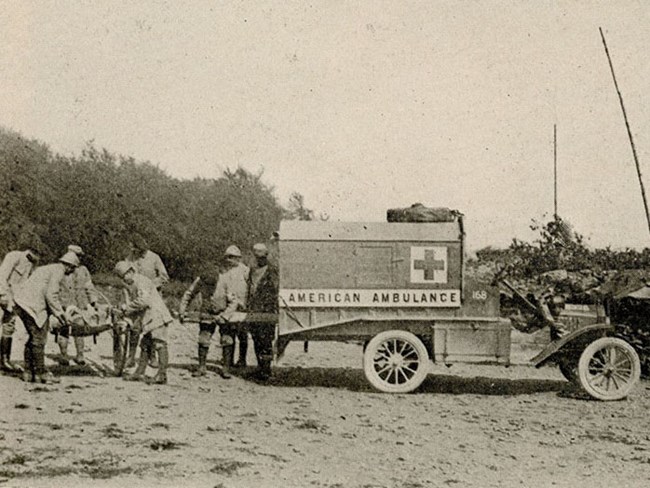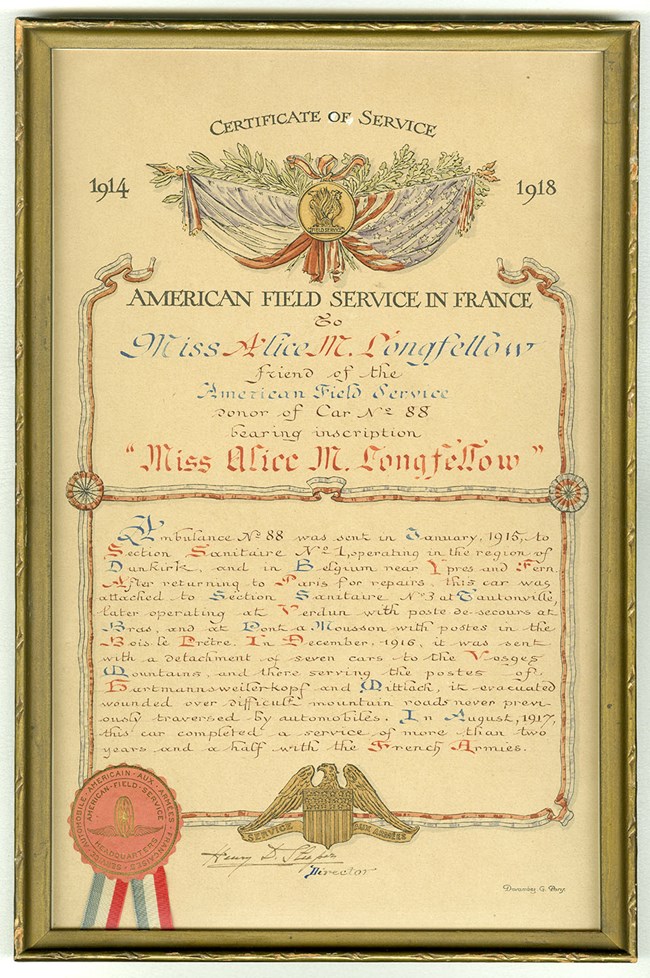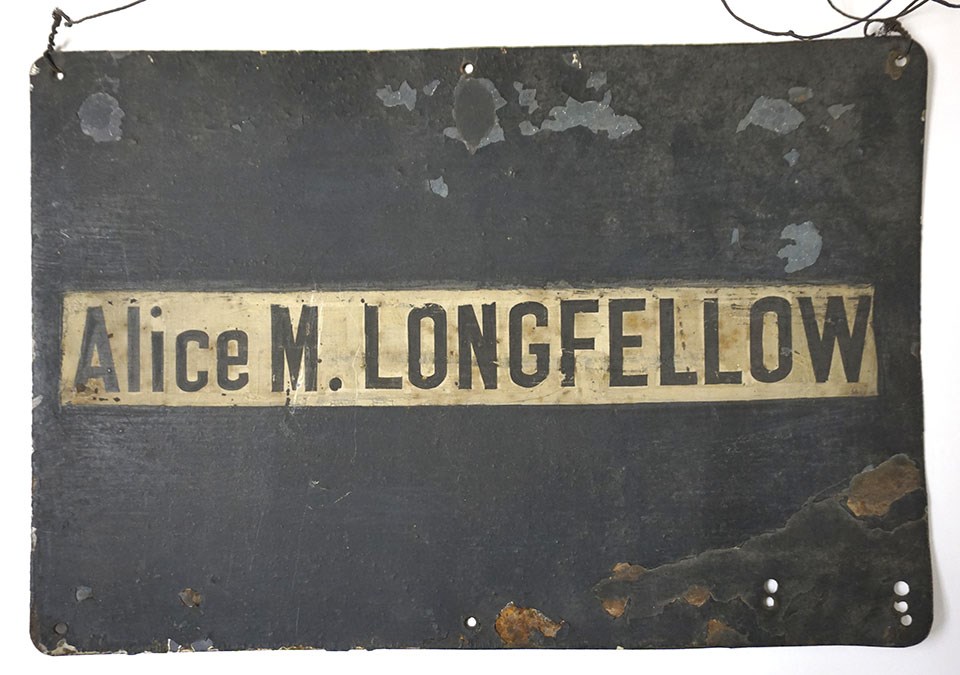Last updated: November 19, 2025
Article
Alice Longfellow and the American Ambulance Field Service

Alice M. Longfellow Papers, Personal Materials, Charities
When World War I erupted across Europe in 1914, the United States remained neutral throughout the first 2 and a half years. Private Americans, however, responded to the international crisis through private donations. Alice Longfellow, the poet’s daughter, contributed to several organizations providing humanitarian relief over the course of the war and beyond. A partial listing includes the Belgium Relief Fund, the American Fund for French Wounded, the Lafayette Fund, the Committee Franco-American for the Protection of the Children of the Frontier Fund, the American Committee for War Relief in Florence, and the Serbian Hospital Fund.

LONG 4787
In late 1914, Alice Longfellow donated to the American Field Service, funding the purchase and maintenance of a Ford Ambulance at the western front. Alice’s financial records for this period do not survive, but a fundraising circular for the American Ambulance Field Service in France suggests the scale of her donation: “A Ford Ambulance can be bought and maintained for one year for $1,600.”
Ambulance No. 88, named the “Miss Alice M. Longfellow Ambulance” in recognition of her donation, went into service in January 1915. Over the course of two years it operated in Dunkirk, Ypres, Verdun, Pont a Mousson, and in the Vosges Mountains. The Field Service and one of the ambulance’s drivers, Edward Tinkham, sent occasional updates on the ambulance’s service through the war. In late June 1916, the ambulance was sent to Verdun, where Tinkham described harrowing nighttime evacuations of the wounded at the front:
Close on ten o’clock the first cars started out for the Postes de secours, winding along thru the battered city across the Meuse to a suburb and then on the road leading to B---. There was only this one road for all, soup kitchens ammunition trains, and ambulances. We were always in a hurry and taking chances on a smashup. We had to. Only four hours of darkness and the road was often shelled.
… Wounded were brought in on hand cards to the post and taken down a deep cellar until we arrived. Loading stretchers into the cars was slow work. … We could hear the whistle of the coming shell and always made a dive for shell hole or under car. One morning I found five shrapnel balls embedded in the body of the car. … Our cars loaded we started back picking the road as carefully as possible and going very slowly. But we never went slow enough to avoid all the shell holes and time and again as the car would lurch in and out, the screams of the wounded told what the ride cost them.
The ambulance had a few “smashups,” and was sent to Paris for repairs at least twice. In the summer of 1917, it was determined to be no longer fit for service, and scrapped. The treasurer of the American Field Service reported its end of service to Alice Longfellow, offering her a souvenir:
I have sent you today by mail the plate which was attached to your ambulance. As this car has grown old in the service the time at last arrived when it could no longer continue in the heroic work which it had been doing and we were unwillingly obliged to scrap it. It occurred to me that you might like to have this name plate as a souvenir. It has seen perhaps the worst phases of this terrible war, unspeakable sufferings and heroic deeds.

LONG 36485
The plaque is hand-painted and battered. Alice Longfellow treasured it, placing it in her second-floor study, along with a framed certificate of service for Ambulance No. 88 and her niece Erica Thorp’s letters from wartime France. In 1940, as family members considered donating a “Longfellow Memorial” ambulance for France in memory of Alice Longfellow and Anne (Longfellow) Thorp, their nephew Harry Dana called that still-intact corner of the study “a sort of shrine, for which I feel much reverence.”
Sources
“American Ambulance Field Service, 1916-1919,” Series I. Personal Materials, D. Charities, in the Alice Mary Longfellow (1850-1928) Papers (LONG 16173), Longfellow House–Washington’s Headquarters National Historic Site.
Erica (Thorp) de Berry to Harry Dana, 17 June 1940, and Harry Dana to Erica (Thorp) de Berry, 25 June 1940, Series II. Correspondence, A. Incoming, in the Henry Wadsworth Longfellow Dana (1881-1950) Papers (LONG 17314), Longfellow House–Washington’s Headquarters National Historic Site.
Friends of France, The Field Service of the American Ambulance. Boston: Houghton Mifflin Company, 1916. (LONG 8159)
National Parks and the Great War
World War ITags
- longfellow house washington's headquarters national historic site
- history
- world war i
- wwi
- combat
- ambulance
- wounded soldiers
- humanitarian relief
- women's history
- women of public health and medicine
- military history
- international history
- international relations
- women in the world community
- us in the world community
- women in wartime
- alice longfellow
